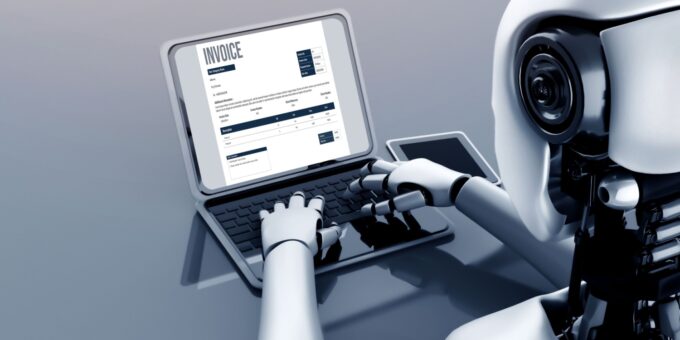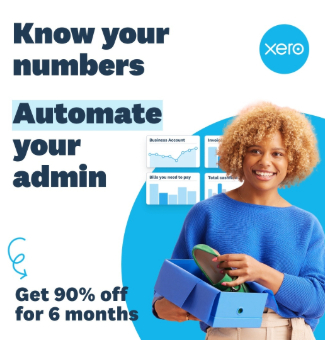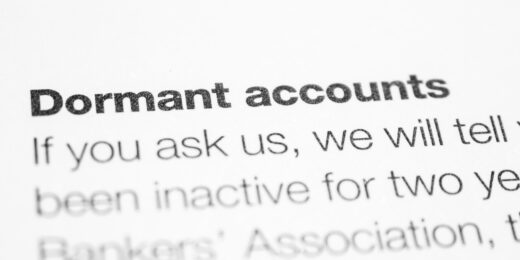For many small business owners, invoicing is a chore that eats into evenings and weekends. You’d rather spend that time delivering great work, winning new clients, or simply switching off, not retyping customer details or chasing overdue bills.
AI-generated invoicing takes repetitive admin jobs off your hands. By automating the dull but essential parts of billing, it helps speed up prep work, reduce mistakes, and keep cash flowing while still giving you full control over what gets sent and when. Because invoicing sits at the heart of your financial admin, streamlining it often has a knock-on effect across your entire bookkeeping process.
Key Takeaways
- Automating invoicing speeds up payments, reduces errors, and keeps bookkeeping records accurate in real time.
- UK compliance changes and potential e-invoicing mandates make AI invoicing a future-proof choice.
- Leading UK tools like QuickBooks, Xero, Sage, and Zoho offer AI features tailored for different budgets and needs.
What are AI-generated invoices?
You finish a job, the client’s happy, and now it’s time to bill them. But instead of pulling up a blank invoice and retyping the exact details yet again, your software’s already on it. That’s the idea behind AI-generated invoicing.
Simply, an AI-generated invoice is created automatically by your invoicing or accounting software. These tools use stored account data, templates, and pre-set logic to generate a draft invoice based on actions you’ve completed, such as finishing a job, approving a quote, or hitting a milestone. That means you don’t have to start from a blank page each time.
Typically, AI-powered bookkeeping software:
- Detects when a job is completed or a quote is approved
- Pulls through the client’s details, item descriptions, VAT, and payment terms
- Prepares a draft invoice for you to check, tweak, and send
- Adds embedded payment options, such as a “Pay Now” button
- Sends polite payment reminders automatically if the due date is missed
Some UK platforms offer e-invoicing, which involves emailing a PDF and sending the invoice directly into your customer’s accounting system via a network like Peppol. This avoids manually re-entering invoice details, reduces errors, and speeds up approvals.
Because invoicing is usually the trigger for other bookkeeping tasks, automating it saves you time and sets up the rest of your accounts to run more smoothly.
How AI fits into bookkeeping automation
Bookkeeping is full of small, dependent tasks, and invoicing is often the first domino. Send an invoice quickly and accurately, and:
- Payments tend to arrive sooner
- Payments sync and match to invoices automatically, helping you quickly identify overdue payments
- Your records stay current, making tax returns and financial reporting far more straightforward
By using AI-powered invoicing, you’re smoothing the flow of your entire financial process. This makes it easier to stay on top of your books month by month, instead of scrambling at quarter-end or year-end. And that bigger-picture benefit is why it’s worth comparing what today’s AI-powered tools can do for you.
Traditional vs AI-powered invoicing
Here’s how traditional invoicing compares to AI-powered tools across the most common tasks.
| Task | Traditional invoicing | AI-generated invoicing |
| Creating invoices | Manually entering details each time | Auto-generated from jobs, quotes, or purchase orders |
| Sending invoices | Attach PDF to an email | Send directly from software with payment link or via e-invoice |
| Chasing late payments | Manual follow-up emails or calls | Automated reminders in your tone, on your schedule |
| Matching payments | End-of-month bank reconciliation | Auto-match as soon as payment arrives |
| Error risk | Higher (typos, wrong totals) | Lower (stored data + pre-set VAT rules) |
Author's Tip
Popular AI-powered invoicing options in the UK
The table above shows where AI can outperform traditional invoicing in speed, accuracy, and follow-up, but those benefits only materialise if you pick the right platform for your needs. That means considering factors like business size, how many invoices you send, whether your clients will likely request e-invoicing, and how much control you want over tone and branding.
With those points in mind, here are four of the leading UK-ready contenders and the situations they’re best suited for:
- QuickBooks: This platform has aggressively pushed automation, introducing AI agents in 2025 that can draft invoices, chase late payments, and assist with reconciliation. You still approve each step, but most of the routine work happens in the background. Since QuickBooks’ cheapest tier starts at £33 per month, it’s not the most affordable option. But signing up for an annual contract can reduce the fee to just £3.30 monthly for the first six months.
- Xero: This is a strong choice if you need e-invoicing now or expect it to be required soon. It supports the Peppol network in the UK, enabling invoices to be exchanged directly between accounting systems. For sole traders and businesses with less complex needs, Xero offers tiers starting from just £7 and £16 per month, respectively.
- Sage: Sage offers “Sage Copilot”, an AI assistant that can write invoice wording and payment reminders in plain English. It suits businesses that want to maintain a consistent tone without drafting every message from scratch. And with one month free and then a fee of as little as £18/month (excluding VAT), it won’t stretch smaller budgets.
- Zoho Books: This is a budget-friendly accounting platform and an HMRC-recognised option for compliance with Making Tax Digital. Featuring an AI assistant called “Zia”, Zoho Books offers a free tier with straightforward invoicing tools and embedded payment options – making it a good fit for cost-conscious small businesses.
Not every tool suits every business. You might prioritise ease of use and lower pricing if you’re a solo founder. If you’re part of a growing team, features like user permissions or advanced reporting may matter more. And be mindful of switching tools mid-financial year: it can create friction if records need migrating or reconciliations are already underway.
Why this matters in the UK right now
Convenience isn’t the only reason businesses are looking at AI accounting platforms. Policy, tax, and compliance trends are also nudging UK businesses toward digital-first invoicing, whether they’re keen or not. Two tailwinds, in particular, make this shift worth paying attention to now rather than later:
1. Compliance is going digital
HMRC is gradually phasing in new rules that require businesses and self-employed people to keep digital records and use approved software for their tax returns. If you’re VAT-registered, you’re probably already doing this under Making Tax Digital for VAT. However, from April 2026, many sole traders and landlords earning over £50,000 will need to do the same for income tax, and from April 2027, that threshold drops to £30,000. So if you’re still relying on spreadsheets or manual records, it’s worth getting ahead of the curve now.
2. Policy is leaning toward e-invoicing
In early 2025, the UK government launched a consultation to explore making e-invoicing more common across public services and private businesses. The goal? To eliminate human error and reduce admin on both sides. Suppliers to the NHS already have to use e-invoicing through Peppol, a secure system that we mentioned earlier, so it’s already happening in some sectors of the UK economy. If wider rules do come in, businesses already using compatible software will be in a much better place to adapt quickly.
These changes mean that even if your current process “works” for now, it may not be futureproof. Transitioning now lets you spread the learning curve over time instead of rushing to comply when deadlines hit.
Get ahead with AI-powered invoicing
The direction of travel is clear: invoicing is becoming faster, more automated, and more tightly integrated with compliance requirements. Even if your current approach feels “good enough”, it may not be sustainable in the face of new rules and client expectations. Moving to AI-generated invoicing early removes decision pressure and gives you time to develop confidence in your system, so you never dread budget meetings or deadlines again.
And remember, while invoicing can be automated, some paperwork still needs a human touch – especially when it comes to your company’s structure and legal foundations. That’s where we come in. From day one, we can set up your company correctly, giving you the framework to layer in automation like AI invoicing.
Frequently asked questions
Please note that the information provided in this article is for general informational purposes only and does not constitute legal, tax, or professional advice. While our aim is that the content is accurate and up to date, it should not be relied upon as a substitute for tailored advice from qualified professionals. We strongly recommend that you seek independent legal and tax advice specific to your circumstances before acting on any information contained in this article. We accept no responsibility or liability for any loss or damage that may result from your reliance on the information provided in this article. Use of the information contained in this article is entirely at your own risk.












Join The Discussion